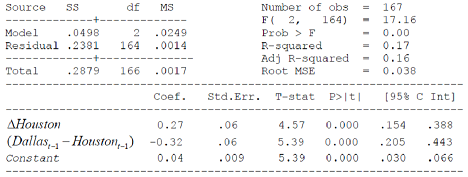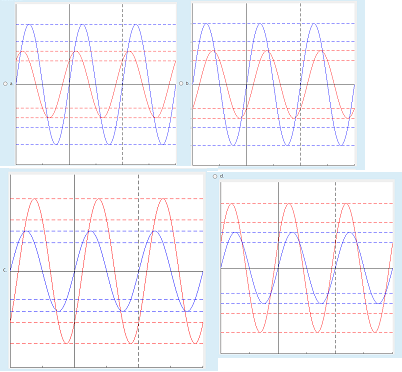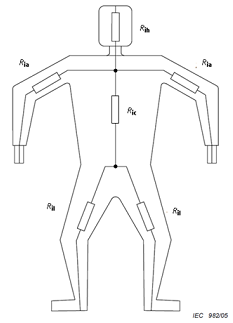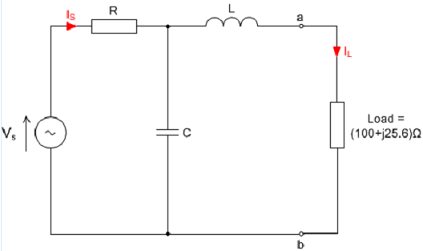Reference no: EM131332532
Question 1: Match the statements below with the answer that best matches. Your choices are:
|
Efficiency
Full Load
Summation of Losses Differential
Power Losses
Speed Regulation No-Load
Power Regulation
The same as the number of slots
Four
Two
Fixed Loss
Variable Loss
The same as the number of poles
Stray Load Loss
|
When an armature is wave-wound, there are this many parallel circuits.
Mechanical losses and core losses are best measured by using this type of test.
Armature Circuit Losses are classified as this type of loss.
The ratio of a motor's output power to input power.
|
Question 2: Determine the rated speed (in r/min) of a DC motor that is rated at 10.3 kW and provides a torque of 107.4 Nm.
Question 3: Calculate the torque developed by a DC motor with 8 poles where the armature is single layer, lap wound with 12 coils, each consisting of 49 turns. The armature current, la, is 6.6 A and each pole produces a flux of 0.3 Wb.
Question 4: Using the no-load and full-load data given below for a DC Shunt Motor, first sketch the motor circuit diagram at both no-load and full-load and then determine the motor efficiency at full-load. Give your answer in percent.
Motor Data
|
Load
|
No Load
|
Full Load
|
|
Supply Voltage VL(V)
|
113
|
113
|
|
Supply Current I(A)
|
1.93
|
9.57
|
|
Field Circuit Resistance Rf(Ω)
|
146
|
146
|
|
Armature Circuit Resistance Ra(Ω)
|
0.68
|
0.68
|
|
Rotational Speed (r/min)
|
1900
|
...
|
Question 5: Use the information given for the DC Shunt Motor in Question 4 to determine the motor speed regulation. Give your answer in percent.
Question 6: Calculate the torque output by the DC Shunt Motor described in Question 4.
Question 7: Calculate the magnitude of the capacitive reactance of a 15.9 μF capacitor connected across a 173 V, 481 Hz sinusoidal source.
Question 8: Calculate the frequency a 24 V sinusoidal source should be set to so that a 620 mH inductor connected across it has an inductive reactance of 1758 Ω.
Question 9: Calculate the instantaneous value of the voltage v(t) = 5.7 sin (100πt) V at t = 3.8 ms. (Note that the argument to the trigonometric functions is given in radians.)
Question 10: Calculate the instantaneous value of the current i(t) = 3.2 sin (100πt - π/5) A at t = 4.9 ms.
Question 11: Calculate the resonant frequency of a circuit where a resistor, R1 = 36.8 Ω, a capacitor, C1 = 745.4 μF and an inductor, L1 = 2.4 mH are connected in series across a 10.4 V sinusoidal source.
Question 12: An inductor, L1 = 7.7 mH, and a resistor, R1 = 119 Ω, are connected in parallel with each other, and in series with another resistor, R2 = 39.3 Ω.
The sinusoidal voltage source for the circuit is 143 V, 89 Hz.
Sketch the circuit and then determine the magnitude of the current, I, through R2.
Question 13: An inductor, L1 = 2.6 mH, and a resistor, R1 = 197 Ω, are connected in series with each other, and in parallel with another series combination of resistor, R2 = 64 Ω, and a capacitor, C1 = 61 nF.
The sinusoidal voltage source for the circuit is 157 V, 91 Hz.
Sketch the circuit and then determine the real power dissipated by the circuit.
Question 14: A circuit has two loads connected in parallel across a 22 V, 98 Hz sinusoidal voltage source.
The load impedances are:
Z1 = 16.5 - 19.1 j
Z2 = 22.4 + 21.7 j
Calculate the reactive power, Q, supplied by the source.
Question 15: A load of (25.8 + j14.45)π is supplied from a sinusoidal voltage source of 240 V, 50 Hz.
Find the magnitude of the reactive power, Q, drawn by the load.
Question 16: As in Question 15, a load of (25.8 + j14.45)Ω is supplied from a sinusoidal voltage source of 240 V, 50 Hz.
A 36 μF capacitor is connected in parallel across the load to reduce the current drawn from the source. Find the magnitude of the reactive power, Q, drawn from the source with this capacitor connected.
Question 17: As in Question 15, a load of (25.8 + j14.45)Ω is supplied from a sinusoidal voltage source of 240 V, 50 Hz.
In Question 16, a 36 pF capacitor was connected in parallel across the load to reduce the current drawn from the source. Whilst this capacitor reduced the current drawn from the source, it was not correctly sized to minimise this current.
Calculate the value of the capacitor that must be used in place of the 36 pF capacitor to bring the system to unity power factor to minimise the current, apparent power and reactive power supplied by the source.
Question 18: Find the magnitude of the resistive component of the impedance of a system with the following voltage and current waveforms:
v(t) = 36.4 sin (100πt) V
i(t) = 2.8 sin (100πt + π/5) A
Question 19: For the two current phasors described below, first add them graphically by sketching them and using the parallelogram method.
Then complete the addition mathematically to verify your sketch and calculate the exact magnitude of l1 + l2. Enter the magnitude here.
I1 = 21.7 ∠ 59°A
l2 = 30.4 ∠ 57°A
Question 20: Select the waveform set that matches this phasor diagram:

Note that the colours of the waveforms match the colours of the phasors.
Select one:

Question 21: A person is exposed to a 240 V AC shock to their right hand when touching a faulty toaster. The person had both feet on the floor and was wearing shoes with a resistance of 400 Ω each. Using the resistance values and diagram provided, sketch the circuit diagram and then determine the magnitude of the cardiac current. Iic, flowing through the resistance Ric.
Head Resistance, Rih = 560 Ω
Single Arm Resistance, Ria = 2734 Ω
Cardio (or heart) Resistance, Ric = 72.8 Ω
Single Leg Resistance, Ril = 3265 Ω

Question 22: Referring to the previous question where a person was exposed to an electrical shock due to a faulty toaster. Select all of the following circumstances that would have led to an increase in the magnitude of the cardiac current, Iic.
Select one or more:
a. Both hands made contact with the voltage source.
b. The person had no shoes on at the time of exposure.
c. The person's left foot was resting on the top of their right foot at the time of exposure.
d. The person had one foot lifted slightly off the ground at the time of exposure.
Question 23: Match each question below with the best answer. Your choices are:
|
Centre
Improve Efficiency
Increase Output Power
Does not matter
Different secondary voltage
Galvanic Isolation
Stay the same
Minimum number of turns
Increase
Different secondary voltage and current
Different secondary current
Remain Unchanged
Cannot determine
None of these options
Maximum number of turns
Electrical Isolation
Decrease
|
Why might a 1:1 transformer be used in an electronic circuit?
A transformer has an internal fault which shorts out about 10% of the secondary turns. Neglecting the effects of the fault on the transformer operation, the secondary voltage would:
When a transformer is energised, there is a possibility that the core can become saturated due to the point on the voltage waveform at which the transformer is energised. If a transformer has a tap changer that allows the number of turns on the primary side to be adjusted, to limit the possibility of saturating the core on energising the transformer, the tap changer should be set to:
|
Question 24: An ideal transformer is rated at 579 VA and has a primary voltage of 419 V and a secondary current of 8.9 A. Calculate the turns ratio, n, of the transformer.
Question 25: An ideal transformer has a primary voltage of 405 V and a secondary voltage of 147 V. Calculate the secondary current when the primary current is 3.9 A.
Question 26: A transformer has a primary voltage of 428 V at 167 Hz, a secondary voltage of 214 V. There are 750 turns on the primary winding. Neglecting all losses, determine the maximum flux (in Wb) set up in the core.
Question 27: A transformer has a primary voltage of 456 V at 149 Hz, a turns ratio of 9 and there are 159 turns on the secondary winding. Neglecting all losses, determine the emf per turn.
Question 28: A transformer is rated at 709 VA and has a primary voltage of 448 V and a secondary voltage of 183 V. Calculate the efficiency (in %) of the transformer operating at 0.53 rated load when the power factor is 0.89, the rated copper losses are 42 W and the rated iron losses are 25 W. Give your answer in percent.
Question 29: A transformer is rated at 959 VA and has a primary voltage of 487 V and a secondary voltage of 150 V. Its rated copper losses are 40 W and the iron losses are 25 W. Calculate the load factor (in %) that would result in maximum operating efficiency at unity power factor.
Question 30: Using the given values, find the magnitude of the Thevenin impedance for the circuit shown below.
Vs = 240 V, 50 Hz
R = 91 Ω
C = 191.0 μF
L = 30.1 mH
